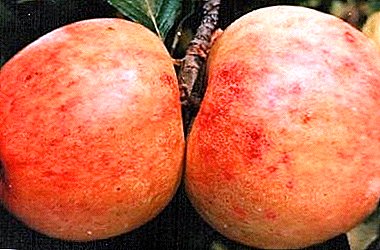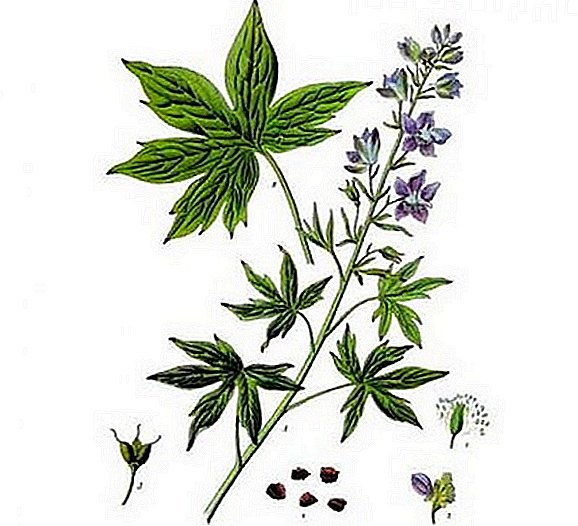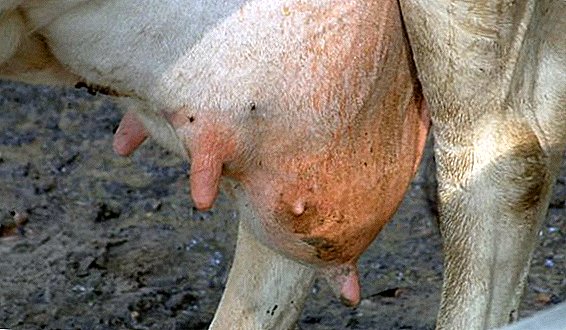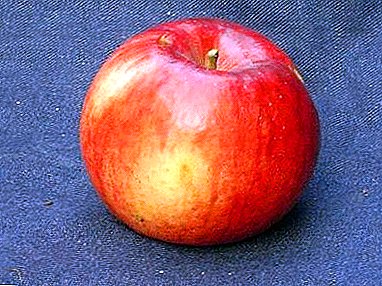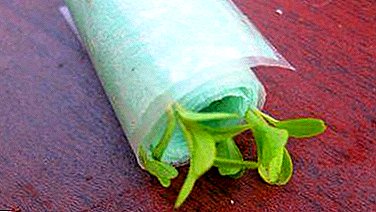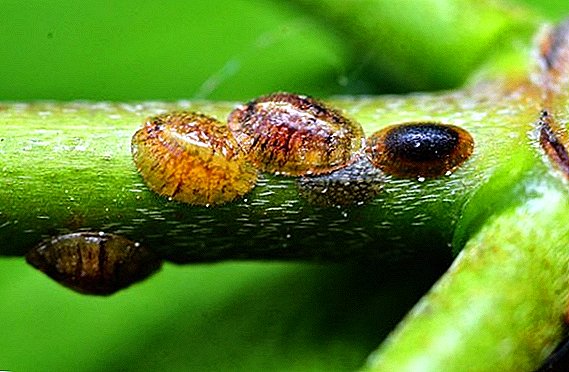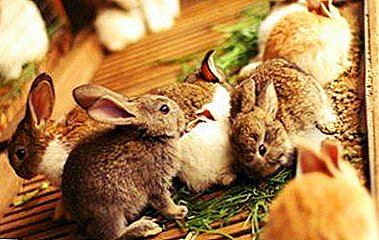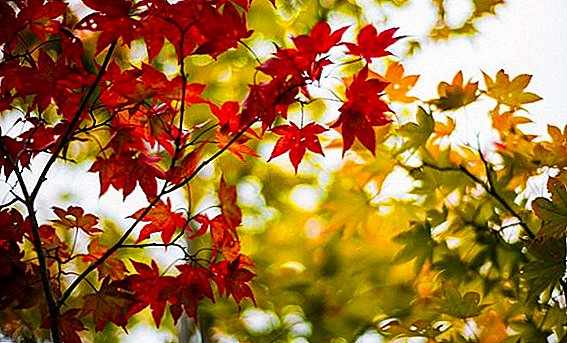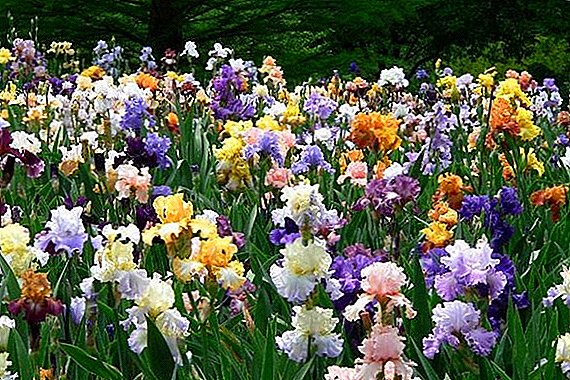 The flowers of the cockerel, scallops, or more scientific - irises, are so popular that even a child can recognize them in the photo. They grow in almost every yard, and all because they are very decorative and completely unpretentious. With the help of irises, you can fence paths and form hedges. Without exaggeration, this flower is just a godsend for the gardener.
The flowers of the cockerel, scallops, or more scientific - irises, are so popular that even a child can recognize them in the photo. They grow in almost every yard, and all because they are very decorative and completely unpretentious. With the help of irises, you can fence paths and form hedges. Without exaggeration, this flower is just a godsend for the gardener.
Cockerel flowers
The flowers of the cockerel, or as they are called - iris, belong to the genus of perennial plants Iris or Iris. More than 700 varieties of these beautiful flowers are known, which amaze with amazing forms of buds and a variety of colors.
Irises are rhizomatous and bulbous. Also, the plants differ in the form of buds, there are bearded ones, which are commonly called cockerels because of the characteristic tuft, and non-bearded: marsh, Siberian, iris spuria.
The leaves most often have a xiphoid shape, thin, elastic, covered with a waxy bloom; leaves of a linear shape are less common. They gather in bunches around the peduncle.
Large single buds can be of various shapes and various colors, some have a light pleasant honey aroma. Flowering begins in late spring and continues until July, and some varieties bloom again in September. 
Did you know? The iris flower, which we used to call the cockerel, got its name in honor of the Goddess Iris. It is believed that the name of the flower gave Hippocrates.
Where to plant them
As with the planting of any perennial, you need to think about where it is better to plant the plant. To do this, you need to know that the irises have a feature each year to shift a few centimeters from the original place and quickly grow.
Light and place
A large amount of light - the key to success in growing scallops, with good lighting, you get the maximum size and duration of flowering.
On shaded areas, the plant feels uncomfortable and may not bloom at all. It is necessary to take into account the fact that excessive moisture is undesirable for these flowers, therefore, the best flower beds for planting are high beds, areas on slopes and hills.  At the same time, plants should be protected from strong winds and drafts, since, if present, the stems can break off.
At the same time, plants should be protected from strong winds and drafts, since, if present, the stems can break off.
The soil
Irises prefer a neutral or slightly alkaline soil; when planting in acidic soils, it is necessary to add lime, chalk or ash to neutralize acidity.
For planting bearded species, it is necessary to make good drainage, since stagnation of water can greatly harm the plant. Before planting the land should be well loosened and remove all weeds. Fertile, rich soils are ideal for planting.
Did you know? In ancient times, the seeds of irises were considered a delicacy, they were fried and prepared to drink, vaguely reminiscent of coffee.

Planting irises
There is no specific guidance on when to plant irises, this can be done both in spring and in autumn, given certain nuances.
In the spring
Do not neglect pre-preparation. You should carefully inspect the tuber and, if necessary, remove areas on which rot has formed, and cut too long roots.
Then it will not be superfluous to disinfect it in a solution of potassium permanganate; to do this, mix the preparation with water to a pale pink color and hold the planting material in it for 30-40 minutes.
This is not a complicated procedure to help avoid further problems with the development of the plant. Another secret of a successful planting is that the root can be kept for 30 minutes in the solution of "Karbofos", due to this, the plant will create a stable immunity to pests. The depth of the landing hole for bearded species should be proportional to the tuber, it should not be dredged too much, the tip should rise above the ground.
When planting unbordered irises, the root should be carefully covered with soil. If you plan to plant several plants next to each other, you must keep a distance of not less than 60 cm between them.
In the autumn
In fact, the autumn planting is not much different from the spring. Roots are also recommended to sanitize and remove rotting areas. Call it hygienic procedures that will protect the plant in the future. 
As for the depth and interval of planting irises, then almost everything coincides with the spring. The only thing to consider is that the tubers should be planted mainly at the end of summer and a maximum in the first week of September, so the plant will root well before the cold, and we will get the desired result. 
Important! Can not be used for fertilizing fresh organic fertilizers, as this will harm the plant.
How to care for flowers
It seems impossible, looking at the enchanting flowers of the rooster in the photo, that planting and caring for them is not difficult, but it really is.
Regular watering is necessary for plants only in very dry weather during the formation of buds. In the further vegetation process, you can enjoy the decorative leaves and not to carry out water treatments.  Regarding feeding the plant is not very demanding. You can make phosphorus-potassium fertilizers in the spring, if the soil, in your opinion, is not sufficiently saturated.
Regarding feeding the plant is not very demanding. You can make phosphorus-potassium fertilizers in the spring, if the soil, in your opinion, is not sufficiently saturated.
It will not be superfluous to introduce complex mineral fertilizer in the fall. But in the period of flowering irises are absolutely not recommended any feeding.
Plant Diseases and Pests
Chickens are strong and stable enough, but it happens that they can be damaged by diseases or insects. Problems may occur due to excessive moisture, the root may start to rot.
In this case, you should immediately dig up the plant and use a knife to remove the rotten parts, disinfect and dry the root in the sun. Often gardeners are faced with such a disease irises, like spotting.
In order for the leaves to remain healthy and they are not overtaken by this disease, it is advisable to spray them with a 1% solution of Bordeaux mixture. 
Important! Iris flowers belong to winter-hardy plants and tolerate low temperatures well. But for the utmost confidence that the frosts will not harm them, it is necessary to mulch the soil in the fall.
If foliage and flowers wilted and turned yellow, this can be a symptom of the appearance of scoops. These pests affect peduncles, eating them from the inside.
In order to avoid their appearance in your flower bed, experts advise to carry out preventive spraying with "Karbofos" every 2-3 weeks during the growing season.  Another uninvited guests that can harm your iris are gladiolus trips.which most often attack flowers in arid weather. They disrupt the metabolic processes of the plant, after which the foliage turns yellow, and the buds fade and die.
Another uninvited guests that can harm your iris are gladiolus trips.which most often attack flowers in arid weather. They disrupt the metabolic processes of the plant, after which the foliage turns yellow, and the buds fade and die.  Spraying "Karbofos" is also effective for combating these pests. Slugs can cause significant damage to males. To combat them use "metaldehyde" in the granules.
Spraying "Karbofos" is also effective for combating these pests. Slugs can cause significant damage to males. To combat them use "metaldehyde" in the granules.
The procedure is carried out in the absence of precipitation in the early morning. The drug should be scattered between plants, approximately 40 g per 10 square meters.
With the observance of the simple rules of agricultural engineering and the implementation of a number of necessary procedures, it is possible to achieve an amazing result - the irises will bloom abundantly and delight you with their elegant beauty for many years.  Interestingly, these perennials need transplantation no more than once every 4-5 years. So experiment with shapes and colors and easily create incredible flower beds with the help of these unpretentious plants.
Interestingly, these perennials need transplantation no more than once every 4-5 years. So experiment with shapes and colors and easily create incredible flower beds with the help of these unpretentious plants.


